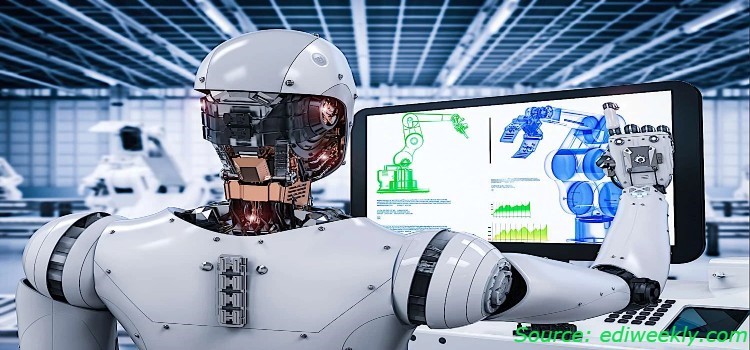Navigating Vision: A Deep Dive into Eye Tracking Innovations
07-Dec-2024
Introduction
The eye tracking industry is thriving due to increased research activities in areas such as human-computer interaction. Researchers utilize eye tracking to improve website design and user experience. In healthcare, applications include concussion diagnosis and aiding those with autism.
The technology's popularity in gaming and exploration in the automotive industry for driver monitoring contributes to its growth. The market is expected to expand, driven by ongoing technological developments and the rise of augmented and virtual reality. Following are the innovations in the eye tracking industry.
Integration with VR and AR: The integration of eye tracking technology into the Virtual Reality (VR) and Augmented Reality (AR) sectors has been instrumental in bringing an immersive and engaging landscape within the eye tracking market. The precision of eye tracking in these environments has brought forth an elevated sense of realism. Notably, it incorporates a concept called "foveated rendering," where the visual content adjusts dynamically.
This, in turn, grants the highest detail and resolution to the user's gaze while conserving computational resources elsewhere. This heightens the immersive qualities of VR and AR and streamlines computational efficiency, making these experiences accessible on a broader range of hardware.
Additionally, eye tracking facilitates natural and gaze-based interactions, simplifying user engagement with virtual objects and navigation through augmented settings. An illustrative instance of this trend can be observed in AdHawk's MindLink technology. The company introduced micro-electromechanical systems (MEMS) chips in March 2021.
They enabled lightweight wearable eye tracking integration with AR glasses and VR headsets. This advancement showcases how eye-tracking continuously enhances the capabilities of VR and AR technologies within the evolving eye tracking market.
Accessibility and Assistive Technology: The integration of eye tracking into assistive technology has represented a groundbreaking leap forward for individuals with disabilities, redefining their interactions with the digital realm and their immediate environment. Eye tracking technology has empowered those with limited physical mobility by granting them newfound control over computers.
With precision and simplicity, users can navigate the digital realm, operate software, and communicate effectively solely through the movement of their eyes. Moreover, this technology has fostered the development of sophisticated augmentative and alternative communication (AAC) devices, allowing individuals with speech and motor impairments to express themselves.
It also bridges the gap between their thoughts and the world. Whether it is about enhancing computer interaction, aiding communication, or enabling environmental control, the application of eye tracking in assistive technology has fostered inclusivity, independence, and improved quality of life for countless individuals with disabilities.
As an example, eye tracking technology was used to help children with disabilities in Ukraine attend school and interact with their peers. UNICEF provided eye tracking devices to children with disabilities, such as Bohdan and Artem, to enable them to communicate, develop, and attend school. These devices allow children to study and engage in educational activities more effectively, improving their overall well-being and social integration.
Machine Learning and Analytics: Machine learning and analytics have become integral parts in eye tracking, revolutionizing how users interpret and harness data on human gaze and behavior. With machine learning algorithms, eye tracking systems can now scrutinize extensive datasets to uncover intricate patterns and correlations that were previously elusive.
This precision in data analysis extends to real-time adaptability, allowing interfaces and applications to respond dynamically to a user's gaze and actions. Moreover, machine learning paves the way for personalized user experiences by tailoring content and recommendations based on gaze behavior, heightening user engagement and relevance.
Beyond gaze tracking, machine learning delves into emotion and cognitive state analysis, offering insights into user sentiment and engagement. This evolution is particularly impactful in usability testing, predicting user actions, and automating the analysis of eye tracking data.
This, in turn, leads to applications in fields, such as user experience design, market research, and healthcare. The integration of machine learning and advanced analytics in eye tracking not only refines our understanding of gaze patterns but also fosters a future of personalized, adaptive, and insightful applications, further propelling the growth of the eye tracking market.
For instance, C. Light Technologies, Inc., participated in UC Berkeley's SkyDeck program. The company showcased the world's inaugural retinal eye tracking technology and utilized machine learning to evaluate and predict neurological well-being.
Automotive Applications: The automotive industry has witnessed a notable integration of eye tracking technology, primarily in the context of driver monitoring and enhancing vehicle safety. This development is a significant step forward in improving road safety and driver well-being.
Eye-tracking technology is pivotal in detecting and mitigating driver fatigue and distraction. By continuously monitoring a driver's eye movements, the system can identify signs of drowsiness or distraction, such as prolonged eye closure or an extended gaze away from the road. In response to these cues, the technology can trigger alerts to the driver, encouraging them to refocus their attention on the road.
Advanced systems can even initiate semi-autonomous or autonomous driving functions to assist drivers until they regain full attentiveness. This application is particularly crucial in reducing accidents caused by tired or distracted drivers, making the roads safer than before for all. Moreover, the automotive industry's adoption of eye tracking enhances the overall driver experience, ensuring that drivers remain engaged and safe while operating their vehicles.
As a prime example, in the middle of 2023, Tobii partnered with Automotive Motion Lab for a research initiative aimed at detecting driver drowsiness without the need for cameras. This advanced the applications of eye tracking technology in the automotive industry. This breakthrough significantly enhances driver safety, and is relevant to the growing eye tracking market.
Predictive Eye Tracking Analytics: Predictive applications of eye tracking, powered by machine learning models, have emerged as a game-changer, particularly in marketing and e-commerce. These models analyze the intricate patterns of user gaze behavior to anticipate their actions and intentions, providing a substantial advantage in understanding consumer choices and preferences.
In marketing, predictive eye tracking allows businesses to understand how consumers interact with advertisements, product displays, and online content. By analyzing where a user's gaze lingers and what elements attract their attention, marketers can tailor their strategies to create more compelling campaigns than before. This insight can significantly improve ad design, layout, and content, ultimately enhancing engagement and conversion rates.
Incorporating predictive applications of eye tracking provides a competitive edge in a data-driven world. By understanding and pre-empting consumer behavior, businesses can refine their strategies, increase user engagement, and boost sales, ultimately redefining the landscape of marketing and e-commerce. As an illustration, Attention Insight, an emerging design analytics firm specializing in AI-powered website and advertising campaign evaluation, introduced the industry's pioneering tool for predictive attention testing focused on ad posters.
The technology emulates human attention patterns by utilizing a predictive model trained on an extensive dataset encompassing over 24,000 image data sets. It offers marketing professionals and agencies a remarkable capability to predict users' attention to poster designs with an impressive accuracy rate of 90%.
This, in turn, eliminates the need for brands to conduct eye tracking studies. This pioneering development underscores how recent artificial intelligence (AI) and deep learning advancements are revolutionizing the eye tracking market. Predictive eye tracking, driven by AI, provides a precise and cost-effective substitute for traditional real-person tests, marking a transformative shift in the industry's landscape.
Conclusion
In conclusion, the article delves into the transformative journey of eye tracking technology across various industries and applications, significantly impacting the eye tracking market. Eye tracking technology has evolved from its fundamental role of monitoring and recording eye movements and gaze direction to becoming a cornerstone of innovation and progress in various sectors.
In summary, the article showcases how eye tracking has transcended its origins to become a pivotal force in various industries, redefining user experiences, improving accessibility, enhancing safety, and revolutionizing data analysis. The continuous evolution of eye tracking technology is reshaping the eye tracking market and holding the promise of even more remarkable advancements in the future.
About the Author
 Shyam Gupta is a passionate and highly enthusiastic researcher with more than four years of experience. He assists clients in overcoming difficult business challenges by providing actionable insights through exhaustive research. He has closely monitored several industries, such as ICT & Media, Robotics, and Electric Vehicles. He has a keen interest in writing articles and uses blogs as a medium to share his thoughts. He spends his time reading and painting when not keeping up with industry news. The author can be reached at info@nextmsc.com
Shyam Gupta is a passionate and highly enthusiastic researcher with more than four years of experience. He assists clients in overcoming difficult business challenges by providing actionable insights through exhaustive research. He has closely monitored several industries, such as ICT & Media, Robotics, and Electric Vehicles. He has a keen interest in writing articles and uses blogs as a medium to share his thoughts. He spends his time reading and painting when not keeping up with industry news. The author can be reached at info@nextmsc.com
Add Comment
Related Blogs
IBM Corporation: Leading the Market with USD 61.86 billion Revenue and Advanced AI Innovations
Next Move Strategy Consulting forecasts a substantial rise i...
Role of Top Giants in Revolutionizing the Payment Industry With BNPL
According to the Next Move Strategy Consulting analysis, the...
How Modern Robot Software Pave the Way for Intelligent Machines
Introduction The field of robotics has undergone a remarkable revolution, evo...











